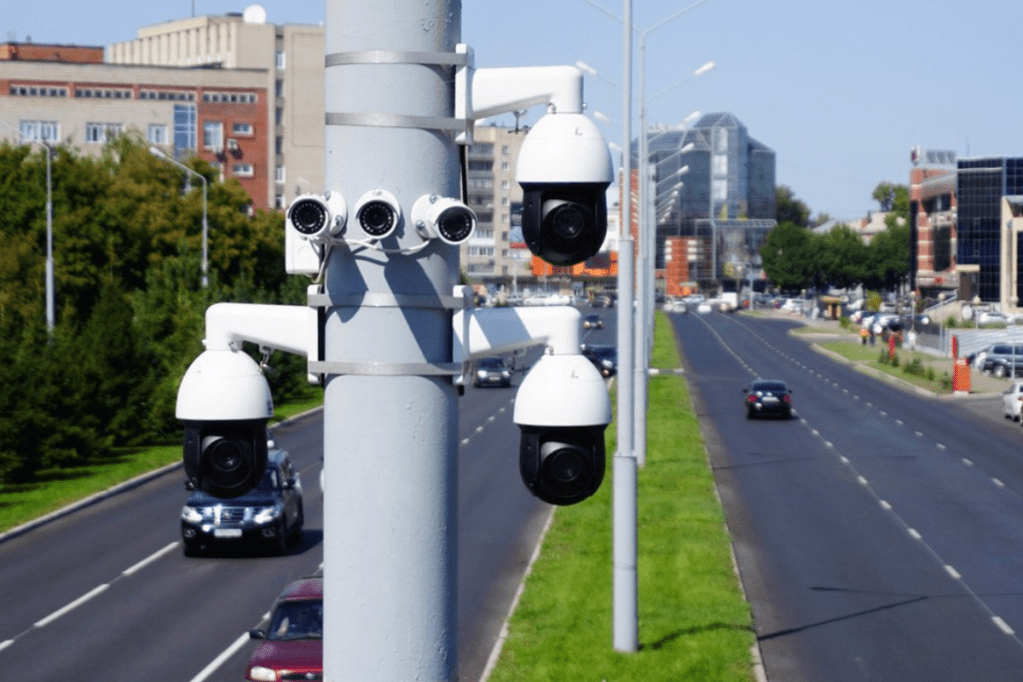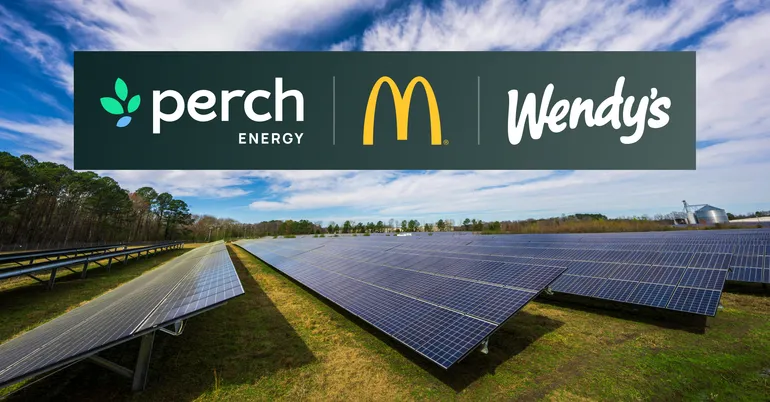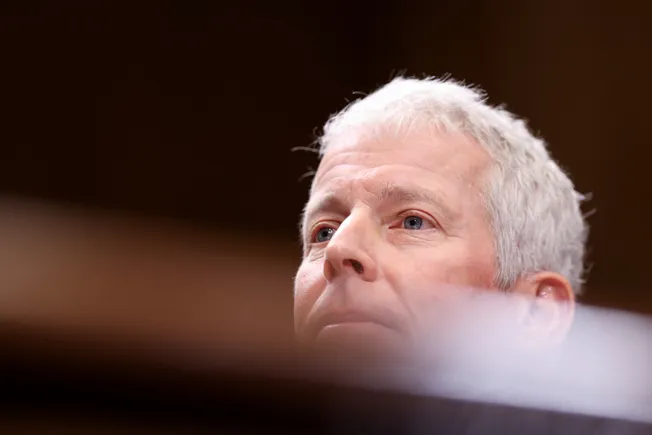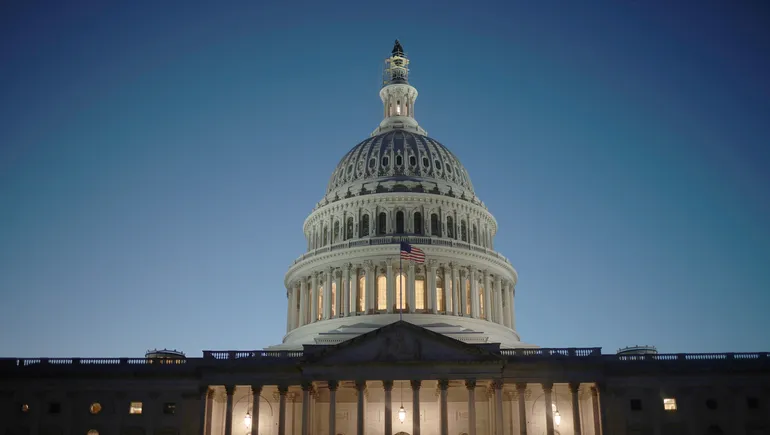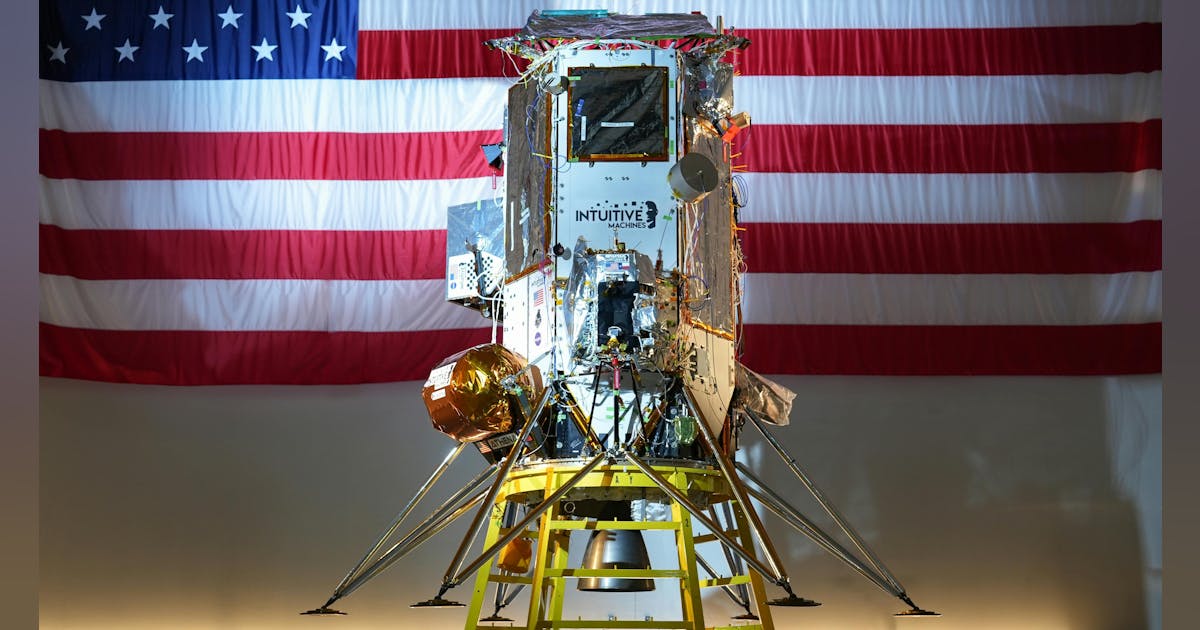
In the waning days of the Biden administration, the U.S. Department of Energy’s Loan Programs Office announced nearly $23 billion in conditional loan commitments for eight utility generation, transmission and grid modernization initiatives spanning 12 states.
Recipients of low-interest LPO loans “incur lower financing costs for their qualifying infrastructure projects than if they had used commercial capital markets [and] will pass along the savings to customers” while fulfilling LPO’s mandate to “make the clean energy transformation affordable and achievable for everyone,” DOE said on Jan. 16.
But these conditional commitments find themselves in limbo amid the Trump administration’s Jan. 20 pause of “green new deal” spending and a much broader Jan. 27 freeze — now temporarily on hold as lawsuits pile up in federal court — on virtually all discretionary federal spending. So do dozens of other conditional and finalized LPO commitments, along with tens of billions more in funding from other federal programs authorized by Biden-era energy and infrastructure legislation. On Jan. 28, the Environmental Protection Agency notified awardees of its $7 billion, IRA-authorized Solar for All program that it was pausing grants until further notice, and several awardees were unable to access its online portal, E&E News reported Thursday.
So far, utilities affected by the spending freeze and broader federal policy turmoil appear content to wait for more clarity. But the administration’s early actions have already caused deep concern across the U.S. clean energy sector, and experts interviewed by Utility Dive said the ordeal could raise questions about the federal government’s future as a reliable counterparty.
“It’s important to look at these actions around preventing disbursements in the context of the broader set of actions the administration has taken in its first weeks,” such as its Jan. 20 halt to permitting activities for onshore and offshore wind projects under federal jurisdiction and sweeping reviews of longstanding environmental regulations, said Romany Webb, deputy director of the Sabin Center for Climate Change Law at Columbia Law School.
“All of those things together create a huge amount of uncertainty that [makes] business decision-making difficult, discouraging investment not just in climate technology but across the economy,” Webb said.
How are utilities dealing with federal spending uncertainty?
The Biden-era LPO announced 53 deals totaling about $107.6 billion in financial commitments, $60.2 billion of which is finalized and $47 billion of which remains conditional.
LPO raced to get funding out the door in the wake of the Nov. 5 presidential election, finalizing multibillion-dollar loans for battery plants, electric vehicle assemblies and power-system investments during a frenzied two-month span. The Jan. 16 utility initiatives were among the office’s final announced commitments.
LPO announced the initiatives through its IRA-authorized Energy Infrastructure Reinvestment program, which supports utilities’ efforts to reduce greenhouse gas emissions by replacing, repowering or retooling retired generating assets and building or upgrading energy generation and transmission infrastructure. The IRA authorized the EIR program to “accelerate the nation’s clean energy transition,” DOE says.
The Jan. 16 commitments would support “new generation from wind, solar and hydropower … at gigawatt scale” as well as new transmission lines, reconductoring of existing lines, substation upgrades, virtual power plant expansions and “strategically placed energy storage to improve the utilization and performance of the system utilities have already built and paid for,” DOE said.
A $3.5 billion conditional loan guarantee to PacifiCorp would support the utility’s Project WIRE, adding about 700 miles of new high-voltage transmission line to incrementally increase carrying capacity by more than 3,000 MVA across Oregon, Idaho and Utah. Project WIRE would “augment overall system capacity” while reducing wind plant curtailment in the region and could save PacifiCorp customers as much as $1 billion over the life of the loan “due to the reduced cost of debt associated with LPO financing,” DOE said.
“PacifiCorp recognizes that the recent DOE announcement was a conditional commitment for a loan guarantee,” spokesperson Omar Granados told Utility Dive. “The company plans to continue working with the DOE on loan guarantee conditions and is hopeful that a definitive agreement on this key funding can be met.”
Farther east, a $3 billion commitment would enable two Alliant Energy subsidiaries to add about 2 GW of clean energy generation and storage capacity to replace retiring coal assets in Iowa and Wisconsin over the next 10 years, DOE said.
“Alliant Energy will continue to work with the Department of Energy to finance the loan guarantees and monitor any changes that could impact the conditional commitment,” spokesperson Morgan Hawk told Utility Dive.
Alliant announced plans last year to add a 20 MW/200-MWh CO2-based energy storage system near one of those plants, the 1,023-MW Columbia Generating Station in central Wisconsin that it jointly owns with Wisconsin Public Service and Madison Gas and Electric. In December, the owners pushed back the plant’s retirement date to 2029, citing the need for continued system reliability while they explored a possible natural gas conversion at one or both units.
The largest of the eight conditional commitments went to Michigan utility Consumers Energy, which aims for net-zero greenhouse gas emissions companywide by 2050 and zero methane emissions from its natural gas operations by 2030, DOE said. If finalized, the $5.2 billion loan guarantee would support deployment of 1.8 GW of solar, wind, battery and virtual power plant projects while enabling replacement of legacy natural gas pipelines.
“We think the lower-interest federal loan program is good for our customers and consistent with President Trump’s vision to invest in energy infrastructure and lower energy costs,” spokesperson Katie Carey told Utility Dive. “We look forward to finalizing the conditional commitment in conversations with his administration.”
Which federal commitments are most at risk?
The Trump administration’s broad, vaguely worded executive orders raised questions in Washington and across the U.S. energy industry about exactly which forms of energy-related spending it intended to halt, experts said. Adding to the confusion, the White House Office of Management and Budget on Jan. 28 published a 52-page instructional memo on the spending freeze, followed by an apparent partial rescission of the Jan. 27 spending freeze that White House Press Secretary Karoline Leavitt said would leave the underlying executive orders in effect.
Analysts interpreted the net effect of these actions as maintaining the freeze on federal grants and loans related to IRA-authorized “green new deal” spending, but not — yet — affecting IRA production, investment and manufacturing tax credits.
“We interpret this to mean that programmatic spending, including conditional commitments from the Department of Energy’s Loan Programs Office, remain paused,” ClearView Energy Partners said in a Jan. 30 research note, Ten Days of Executive Power. “Our understanding from sources peripheral to the Administration is that the White House did not intend to address tax provisions.”
The spending freeze gives the new administration time to audit LPO commitments in light of a December report from the DOE Inspector General’s office, said Jeff Merrifield, partner at Pillsbury Winthrop Shaw Pittman and leader of the firm’s energy transition practice. LPO is “administering more than $385 billion in new loan authority without ensuring a regulatory and contractually compliant and effective system to manage organizational conflicts of interest … [posing] a significant risk of fraud, waste and abuse,” the IG said on Dec. 17.
“There’s good reason to suspect that folks coming in on the transition team saw that report and had questions about the validity of [LPO disbursements],” Merrifield said.
“Lots of Republicans are raising questions about the possibility of a ‘Solyndra 2,’ and so they want to do a deeper dive and vet those projects,” Merrifield said, referring to the California solar startup that went bankrupt after receiving a $535 million LPO loan during the Obama administration.
In the short term, the spending freeze may affect energy sources favored by the Trump administration and its appointees, such as nuclear and geothermal, Merrifield said. But in the longer run, the administration is unlikely to scrutinize spending in those areas to the same degree as spending on disfavored industries like wind, solar, batteries and electric vehicles, he added.
The Trump administration is also likely to “triage” LPO’s commitments, scrutinizing conditional commitments — especially those issued since the Nov. 5 presidential election — more closely than finalized commitments, Merrifield said.
At the same time, despite EIR eligibility criteria that clearly favor projects with a nexus to power-sector greenhouse gas reductions, funding for generation and transmission projects could survive thanks to a broad recognition across the power sector and among senior Trump appointees that such investments are needed to ensure system reliability amid surging load growth projections, he said.
Beyond the LPO, the federal funding pause “seems like an indefinite sort of action” that is likely to have a material impact on the operations of energy-adjacent early-stage companies, research organizations and nonprofits that depend on federal grant programs, Webb said.
“[Litigation] will inevitably take time to play out, and in the meantime, it will be very difficult for affected recipients,” she said.
The Trump administration may be banking on lawsuits sparked by its early actions to set up a decisive fight over the constitutionality of the Impoundment Control Act of 1974, which restricts executive branch authority to withhold funds appropriated by Congress. The OMB memo positioned that office as a key arbiter of government spending decisions, ClearView noted in its Jan. 30 note.
“To the extent litigation over the [executive order] pause and OMB freeze could go to the U.S. Supreme Court, it could create an opportunity for Trump 2.0 to overturn the ICA,” ClearView said.
Federal courts have generally pushed back on executive branch efforts to usurp spending authority from Congress, including during the first Trump term, Webb said. If that changes, “it will be extremely problematic,” she said.

